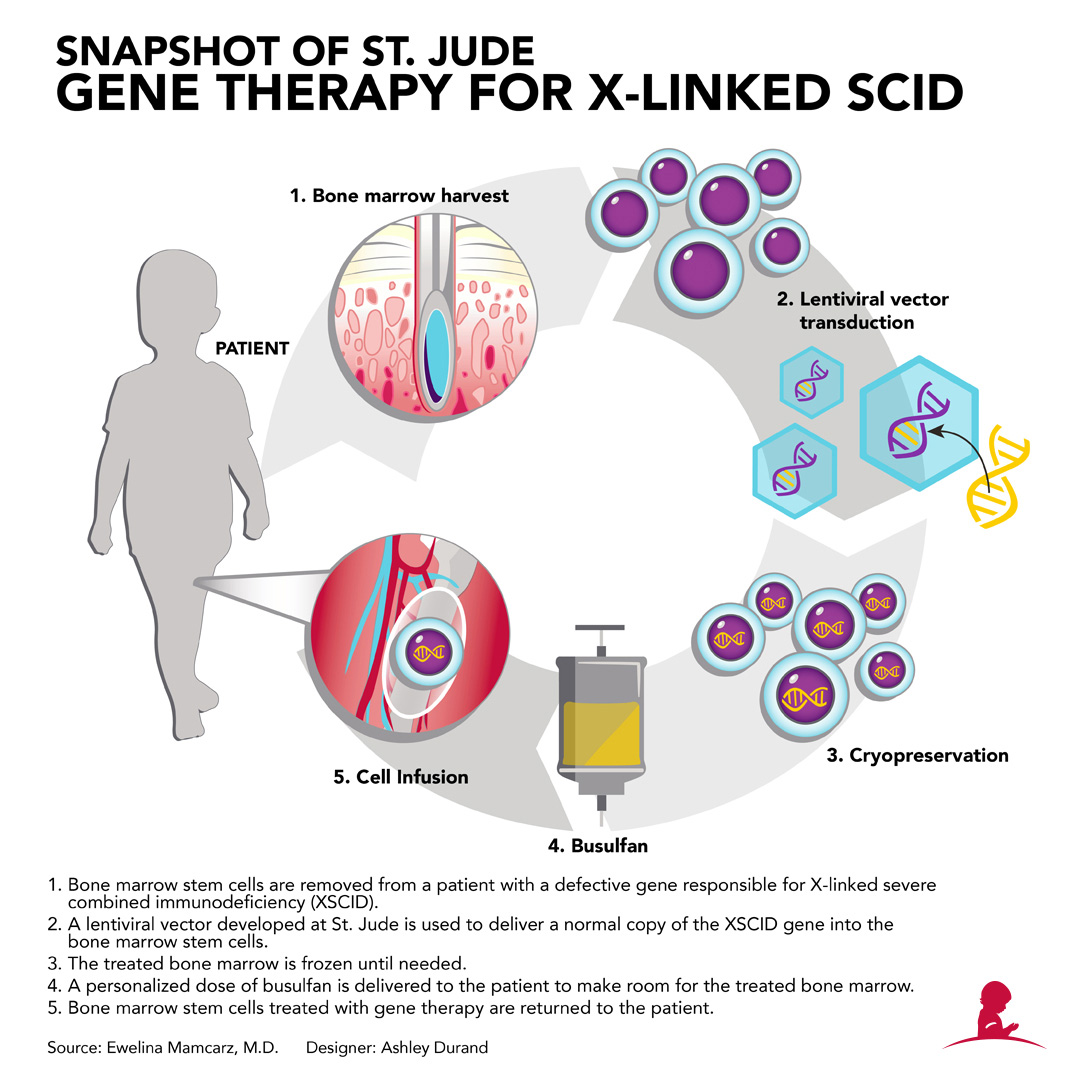X chromosome therapy is emerging as a pivotal advancement in the treatment of genetic disorders, particularly those linked to the X chromosome such as Fragile X Syndrome and Rett Syndrome. The intricate process of X chromosome inactivation proves to be key, as it allows understanding of how to modulate gene expression for therapeutic purposes. Recent research highlights significant findings from Jeannie T. Lee’s lab, which reveal how specific RNA molecules can manipulate chromosomal behavior, potentially reactivating silenced genes. This breakthrough paves the way for innovative approaches in gene therapy, offering hope to thousands affected by these conditions. As scientists delve deeper into these mechanisms, the potential applications of X chromosome therapy may reshape the landscape of genetic treatments globally.
Exploring alternatives to traditional treatments, X chromosome therapy represents a groundbreaking strategy designed to tackle genetic conditions associated with the X chromosome. This innovative approach not only addresses the complexities of X chromosome inactivation but also aims to unlock the therapeutic potential of crucial genes that are otherwise silenced in patients with disorders like Fragile X and Rett Syndrome. Researchers are investigating how advancements in molecular biology and gene therapy can provide solutions to restore normal function in cells impacted by mutations. By shedding light on the roles of RNA and the structure of chromosomal environments, scientists are paving the way for targeted interventions that could redefine care for individuals with genetic disorders. The continued exploration of X-linked therapies underscores the promise of genetic medicine in enhancing the quality of life for many.
Understanding X Chromosome Inactivation: Key Insights
X chromosome inactivation is a fundamental process in female mammals that ensures gene dosage balance between males and females. This phenomenon occurs because females possess two X chromosomes while males only have one. As a result, one of the two X chromosomes in females must be inactivated early during embryogenesis to prevent an excess of gene products. Researchers have long sought to unravel the complexities of this mechanism, particularly how the gene known as Xist plays a pivotal role in this silencing process. By generating a localized alteration in the surrounding chromatin structure, Xist facilitates the formation of specialized domains that result in the inactivation of one of the X chromosomes.
Recent findings from Jeannie T. Lee’s lab have provided substantial insights into how Xist interacts with surrounding genetic material, effectively creating a barrier that encapsulates the X chromosome. This gel-like substance, referred to as ‘chromosomal Jell-O’, allows the X chromosome to exist in a dormant state. The research underscores the delicate balance of interactions between the Xist RNA, the Jell-O-like chromatin, and other regulatory molecules that contribute to X chromosome inactivation. This understanding not only deepens our knowledge of cellular biology but also highlights potential avenues for therapeutic interventions targeting genetic disorders linked to the X chromosome.
The Potential of X Chromosome Therapy in Treating Genetic Disorders
X chromosome therapy emerges as a promising avenue for addressing genetic disorders, particularly those associated with mutations on the X chromosome, such as Fragile X Syndrome and Rett Syndrome. By targeting the mechanisms of X chromosome inactivation, researchers aim to unsilence the healthy version of genes that are otherwise ignored by the cellular machinery. Lee’s lab has made significant strides in developing techniques to manipulate this silencing process, thereby providing the possibility of correcting genetic expression in individuals affected by these disorders. Excitingly, ongoing studies are adapting these methods for use not only in females but also in males, who can suffer from X-linked conditions due to alterations in their X chromosome.
The therapeutic implications of X chromosome therapy are profound, as they hold the promise of restoring proper gene function through gene therapy techniques. For instance, if a disorder results from a mutation on one X chromosome, therapeutic strategies could activate the corresponding healthy gene on the inactivated X chromosome. Such innovations could lead to breakthrough treatments for Fragile X Syndrome and Rett Syndrome, among others, potentially improving cognitive and developmental outcomes for affected individuals. However, challenges remain, such as ensuring the specificity of these therapies to prevent unintended activation of other genes, which could lead to adverse effects.
Fragile X Syndrome and Innovative Treatment Approaches
Fragile X Syndrome (FXS) is the most common inherited cause of intellectual disability and is linked to a mutation in a gene called FMR1 located on the X chromosome. The failure to produce the FMRP protein, which is vital for synaptic development and functioning, contributes to the spectrum of cognitive and behavioral challenges seen in individuals with FXS. Recent research has focused on how modifying the inactivation status of specific X chromosome genes can lead to increased expression of the FMR1 gene, thereby potentially alleviating symptoms associated with Fragile X Syndrome. Jeannie Lee’s pioneering studies suggest that therapies targeting X chromosome inactivation may open new doors for restoring normal FMRP levels in affected individuals.
In approaching treatment for Fragile X Syndrome through X chromosome therapy, researchers may utilize gene therapy techniques to deliver corrective instructions to the body’s cells. The goal is to activate the otherwise silenced X chromosome harboring the healthy FMR1 gene. Therapeutic interventions are anticipated to progress into clinical trials, where they could be evaluated for their effectiveness and safety in humans. The potential to deliver these advancements stems from decades of foundational research into the intricacies of X chromosome function and gene regulation, and it presents an exciting frontier for treating genetic disorders linked to the X chromosome.
Rett Syndrome: Challenges and Therapeutic Strategies
Rett Syndrome, like Fragile X Syndrome, is another neurodevelopmental disorder primarily affecting females, and it is caused by mutations in the MECP2 gene on the X chromosome. The disorder leads to a range of symptoms, including regression in speech and motor abilities, which significantly impact quality of life. The inability to effectively utilize the healthy copy of the MECP2 gene due to X chromosome inactivation represents a major hurdle for therapeutic development. Recent research aims to determine whether unsilencing the inactivated MECP2 gene can offer potential treatment pathways for those affected by Rett syndrome.
Innovative therapeutic approaches are being explored, including the use of CRISPR technology, which may allow for targeted manipulation of the X chromosome to activate the muted MECP2 gene. The application of X chromosome therapy seeks to provide a functional backup for the mutated gene, potentially leading to a restoration of normal gene function and symptom alleviation. The intersection of gene therapy and advancements in understanding X chromosome inactivation presents a beacon of hope for treating Rett Syndrome, paving the way for future clinical applications that could transform the landscape for genetic disorders caused by X-linked mutations.
The Future of Genetic Therapies: Clinical Trials Ahead
As research progresses, the potential of X chromosome therapies to transform the treatment landscape for genetic disorders is becoming increasingly tangible. The work of Jeannie Lee and her colleagues heralds the dawn of a new era in understanding X chromosome biology and its applications in clinical settings. Their ongoing studies not only aim to optimize methods for unsilencing inactivated X-linked genes but also intend to conduct safety studies to ensure efficacy in human subjects. The ultimate goal is to advance these therapeutic strategies into clinical trials within the next few years, a step that could provide much-needed solutions for individuals affected by disorders like Fragile X Syndrome and Rett Syndrome.
The road to clinical application is fraught with challenges, but the rewards could be life-altering for thousands of individuals with X-linked genetic disorders. With stringent safety assessments and rigorous testing protocols, researchers are poised to make significant strides in bringing these innovative therapies to the forefront of medical science. The ongoing collaboration between geneticists, clinicians, and biopharmaceutical companies will play a crucial role in navigating these challenges and ensuring that the promise of gene therapy and X chromosome therapy becomes a reality for patients in need.
The Role of Research Funding in Genetic Discoveries
The advancements in X chromosome therapy and understanding X chromosome inactivation are largely supported by sustained research funding. As emphasized by researchers like Jeannie Lee, the investment from organizations such as the National Institutes of Health has been pivotal in enabling long-term studies that bridge the gap between basic science and therapeutic application. Continuous funding is essential not only for exploring fundamental questions about gene expression and chromosomal behavior but also for fostering the development of innovative solutions that can lead to the treatment of debilitating genetic disorders.
Furthermore, public and private funding sources play a crucial role in facilitating multidisciplinary approaches that merge genetic research with clinical applications. As the scientific community embraces more collaborative efforts towards gene therapy, securing adequate financial support will be vital in propelling these avant-garde projects forward. The intersection of robust funding, innovative science, and dedicated researchers lays the groundwork for future breakthroughs that have the potential to change lives for those affected by genetic conditions.
Exploring Genetic Disorders Beyond the X Chromosome
While much attention has been given to genetic disorders linked to the X chromosome, it is important to recognize that many other genetic conditions exist, caused by mutations on different chromosomes. Disorders such as Cystic Fibrosis or Huntington’s Disease highlight the complexities of genetic inheritance and underscore the necessity for continued research beyond X-linked diseases. Each genetic disorder presents its own set of challenges and opportunities for therapeutic interventions, necessitating a broad focus within the field of genetics.
The tools and technologies developed through research into X chromosome inactivation and therapy can also be adapted to better understand and treat non-X-linked genetic disorders. For instance, the techniques designed to study chromosomal behavior can provide insights into general gene regulation mechanisms across all chromosomes. The ongoing exploration of genetic disorders will contribute to a more holistic understanding of how genes influence health and disease, encouraging the development of effective treatments for a wide range of genetic conditions.
The Impact of Genetic Research on Public Health Policy
The discoveries surrounding X chromosome therapy and other genetic advancements have profound implications for public health policy. As the medical community begins to implement potential therapies arising from genetic research, there is a pressing need for policy frameworks that will ensure equitable access to such innovations for affected patients. Policymakers must consider how to navigate issues of affordability, availability, and ethical implications associated with genetic treatments, particularly those aimed at rare disorders.
Additionally, public health initiatives can benefit from integrating genetic research findings into broader health strategies. By understanding the genetic underpinnings of diseases like Fragile X Syndrome and Rett Syndrome, public health entities can enhance screening protocols, support preventative measures, and promote early interventions. The future of health policies must be informed by advancing genetic research to create inclusive patient care strategies that address the unique needs of those with genetic disorders.
Challenges Ahead: Ethical Considerations in Genetic Therapy
Despite the promising nature of X chromosome therapy and other genetic interventions, ethical considerations remain a significant challenge in the field of genetic research. Issues surrounding the modification of genes, particularly in humans, raise questions about the long-term implications of such changes. There is a fine balance between the potential benefits of curing genetic disorders and the ethical dilemmas posed by genetic manipulation, such as unintended consequences or the creation of genetic inequalities.
Transparency in research, patient consent, and thorough ethical review processes are paramount in addressing these challenges. As therapies based on X chromosome inactivation move closer to clinical application, engaging diverse stakeholders—from scientists to ethicists and the general public—will be essential in shaping responsible policies and frameworks that guide the future of genetic therapy. Ensuring that advancements in genetic research prioritize patient welfare while addressing ethical complexities will be crucial for fostering public trust in these transformative technologies.
Frequently Asked Questions
What is X chromosome therapy and how does it relate to Fragile X Syndrome?
X chromosome therapy focuses on understanding and manipulating X chromosome inactivation to treat genetic disorders, including Fragile X Syndrome. Researchers aim to activate the healthy gene on the inactivated X chromosome to counteract the effects of mutations that cause this intellectual disability.
How does X chromosome inactivation contribute to genetic disorders such as Rett Syndrome?
X chromosome inactivation leaves many females with one active and one inactive X chromosome. For conditions like Rett Syndrome, mutations are often located on the inactive X. Understanding how to reactivate the healthy gene could lead to new therapies for this neurodevelopmental disorder.
What potential treatments are being developed for Fragile X Syndrome through X chromosome therapy?
Researchers, including those in Jeannie Lee’s lab, are exploring ways to unsilence the inactivated X chromosome in cells. By doing so, they aim to allow expression of the healthy gene, which could serve as a therapeutic approach for Fragile X Syndrome.
Can X chromosome therapy be effective for males with genetic disorders linked to the X chromosome?
Yes, while males typically have only one X chromosome, X chromosome therapy can still be relevant. In males, mutations on their single X can lead to disorders like Fragile X Syndrome, and similar methods used to target inactivation in females could have therapeutic implications for males.
What role does the Xist RNA play in X chromosome therapy?
Xist RNA is crucial in X chromosome inactivation. It modifies the biophysical properties of the surrounding chromatin, essential for silencing one of the X chromosomes. By manipulating Xist and its interactions, researchers hope to develop therapies that activate the healthy gene on the inactivated X chromosome, addressing genetic disorders.
What are the safety considerations in developing X chromosome therapy for genetic disorders?
Safety studies are a critical component in developing X chromosome therapies. Researchers aim to ensure that activating specific genes linked to disorders like Fragile X Syndrome doesn’t adversely affect the function of healthy genes on the same chromosome, minimizing potential side effects.
What future advancements can we expect from research on X chromosome inactivation and therapy?
Future advancements may include breakthroughs in unsilencing inactivated X chromosomes, leading to clinical trials for treatments targeting genetic disorders such as Rett Syndrome and Fragile X Syndrome, offering hope for effective therapies for individuals affected by these conditions.
| Key Points | Description |
|---|---|
| X Chromosome and Inactivation | Females have two X chromosomes, leading to the need for one to be inactivated in order to avoid gene duplication. |
| Role of Xist RNA | Xist interacts with a gelatinous substance around chromosomes, facilitating X chromosome inactivation. |
| Promise for Genetic Disorders | Targeted therapies from Lee’s lab aim to unsilence mutated genes associated with Fragile X and Rett syndromes. |
| Clinical Trials | Plans are underway to optimize approaches for safety and move toward clinical trials for potential treatments. |
| Minimal Side Effects | Restoring function of mutated genes with little impact on healthy genes suggests potential for safer therapies. |
Summary
X chromosome therapy represents an exciting frontier in the treatment of genetic disorders. This innovative approach focuses on understanding and manipulating X chromosome inactivation mechanisms to potentially cure conditions caused by mutations, such as Fragile X and Rett syndromes. As researchers, led by Jeannie Lee, continue to unveil the complexities of X chromosome biology, we may soon see effective therapies moving into clinical trials, offering hope to many affected individuals.



